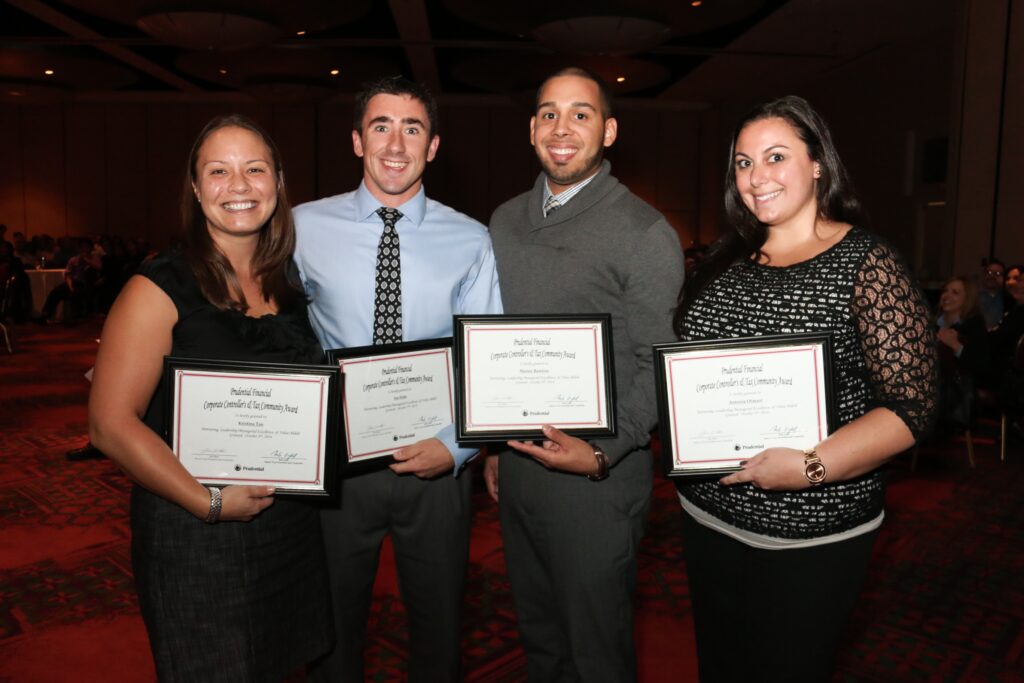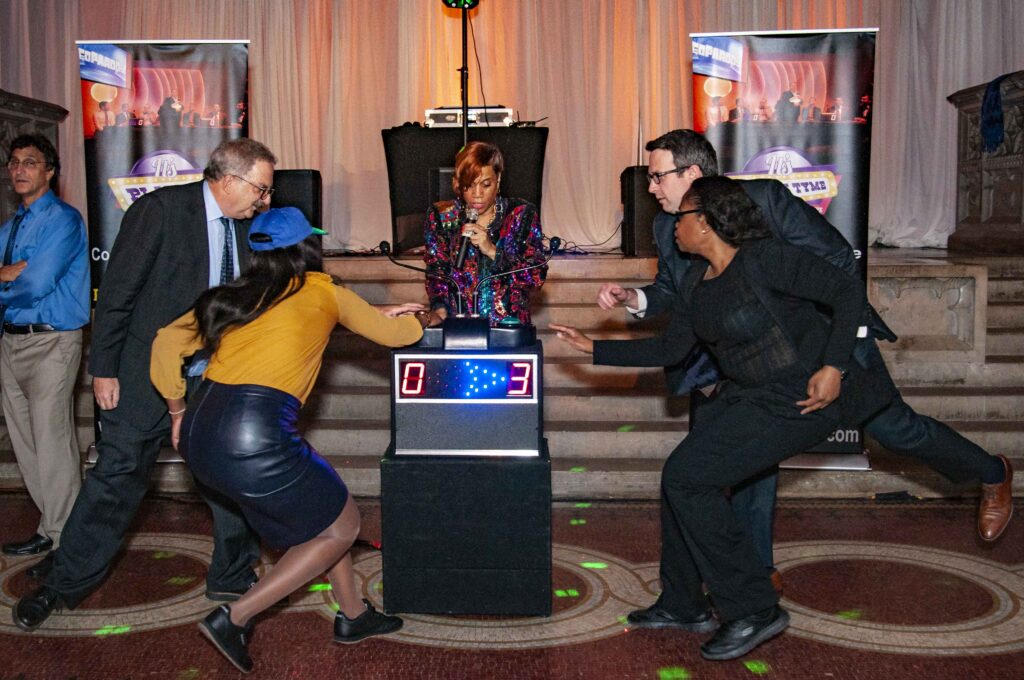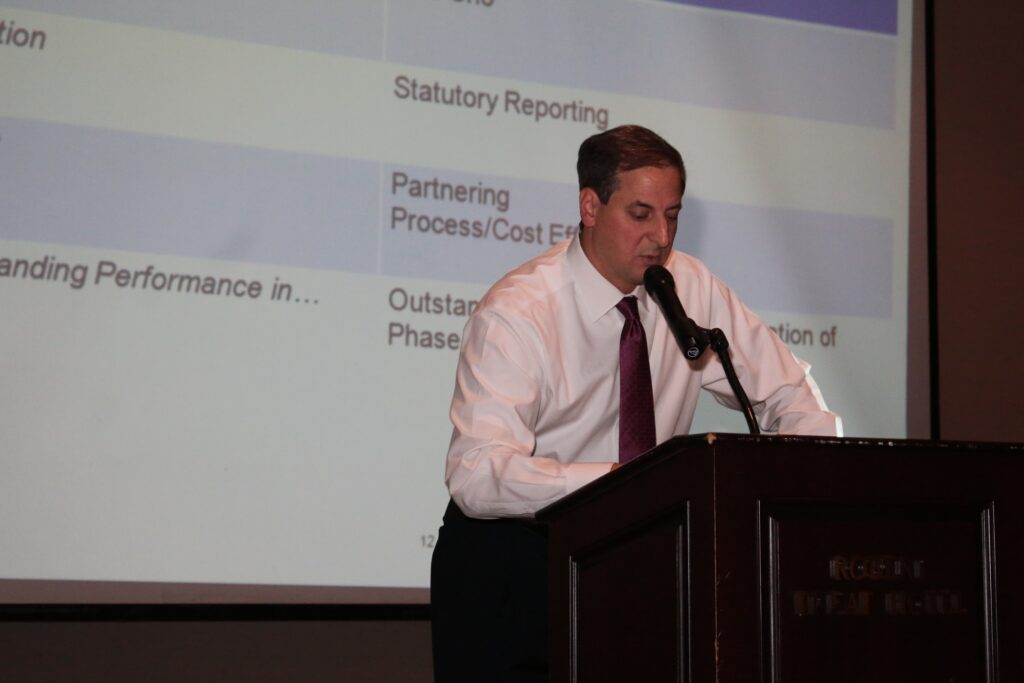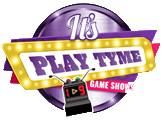In today’s fast-paced and dynamic business environment, it is essential to understand why team building activities are important for fostering a culture of team unity and collaboration.
As a driving force behind organizational success, the importance of team building cannot be underestimated.
Investing in team building activities not only leads to personal and professional growth, but it also enables a thriving business environment that prioritizes teamwork and solidarity.
Discover how integrating team building activities within your organization can lead to a more productive and motivated workforce, ultimately driving the overall success of your business.

the-power-of-unity
Key Takeaways
- Team building activities improve collaboration, unity, and a cohesive mindset among team members.
- Investing in team building initiatives results in increased productivity, innovation, and competitiveness within the organization.
- Successful teams with strong unity directly contribute to achieving business goals and higher employee satisfaction.
- Team building activities help to develop a range of soft skills, enhance self-awareness and empathy, leading to professional advancement.
- Structured team building techniques can sharpen communication skills and strengthen trust within the organization.
Understanding the Importance of Team Building in the Workplace
Team building is a powerful tool that holds the key to unlocking unprecedented levels of team performance, collaboration, and business success.
By investing in team cohesion, organizations can expect tangible returns that significantly impact their bottom line.
To illustrate this point, let’s explore the benefits of team building exercises and the core elements that define effective team building.
Why Investing in Your Team’s Cohesion Pays Off
Developing a strong sense of team cohesion within the workplace can lead to improved productivity, problem-solving capabilities, and enhanced communication among team members.
These benefits, in turn, contribute directly to achieving business goals.
According to a study by Forbes , companies that engage in team building activities enjoy a staggering 25% increase in overall workplace productivity.
This statistic underscores the fact that investing in your team’s cohesion translates to increased performance and profits.
“Team building is not a luxury but a necessity for businesses that wish to see their employees perform at the highest levels.”
The Impact of Team Unity on Overall Business Success

team-unity
Building team unity is crucial to fostering an environment where collaboration and innovation thrive. When teams can work together effectively, they become a competitive force in the market, driving profits, outpacing competitors, and ensuring the longevity of a thriving business.
- Productivity: Teams that operate cohesively tend to demonstrate improved productivity in comparison to disjointed teams.
- Innovation: By cultivating a sense of unity among team members, businesses maximize their potential for innovation and creative problem-solving.
- Competitiveness: A united workforce is better positioned to adapt to change, ultimately resulting in heightened competitiveness within the market.
Core Elements That Define Effective Team Building
Effective team building encompasses several crucial elements that, when combined, create a powerful force for positive change within the workplace. Here are some of the key components to consider when designing team building exercises:
- Inclusivity: Ensure everyone on the team feels included and valued, providing each member with an equal opportunity to contribute.
- Clear Communication: Cultivate an atmosphere where dialogue is transparent, honest, and respectful, enabling team members to share ideas and address potential issues.
- Goal Alignment: Align your team’s goals with those of the organization, ensuring a clear understanding of shared objectives and fostering a spirit of mutual support.
- Trust: Establish trust among team members, providing a foundation for reliable collaboration and long-lasting relationships.
To experience the true potential of team building, focus on fostering these core elements within your team dynamics. By doing so, your organization will be better equipped to face challenges, innovate, and excel in today’s increasingly competitive business landscape.
Key Benefits of Team Building for Employee Motivation and Morale

employee-recognition
One of the main team building benefits is its ability to foster employee motivation and provide a significant morale boost. In this section, we delve into the psychology behind motivation and morale, and how team building activities serve as catalysts for these positive emotional states, ultimately leading to more engaged and productive employees.
| Benefit | Description | Example Activities |
|---|---|---|
| Increased motivation | Employees feel driven to perform better and participate fully in team tasks when they experience a sense of belonging and camaraderie. | Problem-solving challenges, escape room games |
| Improved morale | A strong sense of team unity triggers positive emotions, leading to employees feeling more satisfied and valued at work. | Volunteering projects, team lunches |
| Greater trust | Team building exercises can nurture stronger relationships among employees, resulting in improved trust and communication within the team. | Trust-building games, team workshops |
| Reduced stress | By engaging in fun and recreational activities, employees can reduce their stress levels and feel rejuvenated for upcoming challenges. | Outdoor sports, team retreats |
Team building activities help create a positive work environment by fostering cooperation and collaboration. They contribute to a feeling of empowerment among employees, giving them a sense of ownership over their tasks. As a result, workers become more committed to achieving team objectives and putting forth their best efforts.
The greatest potential for growth and self-actualization occurs through the furthering of work into self-work – Terence Deal & Allan Kennedy
Regular engagement in team building activities ultimately generates a self-sustaining cycle of motivation and high morale. As employees witness the positive results of their efforts and feel acknowledged for their accomplishments, they become more motivated to maintain high performance levels and sustain the team’s momentum.

- Set clear goals: Team building activities should have well-defined objectives that cater to the team’s needs, challenges, and desired outcomes.
- Choose relevant activities: Ensure that the chosen activities effectively address and target the desired skills, relationships, or problem areas within the team.
- Reflect and debrief: Reinforce the team building experience by reflecting on the completed activity and discussing key learnings and takeaways with the team.
- Encourage follow-through: Establish a plan for implementing lessons learned through team building exercises to maintain their positive impact on motivation and morale.
By diligently incorporating team building activities as an integral part of your organization, you pave the way for a workforce that is enthusiastic, engaged, and committed to upholding a culture of collaboration and excellence.
Team Building Activities: More than Just Fun and Games

Team building goes beyond mere fun and entertainment in the workplace.
Utilizing the right blend of unique and engaging team building games, as well as exercises that foster collaboration and personal growth, can lead to tremendous employee development and improved team dynamics.
a) Innovative Team Building Games and Exercises That Encourage Collaboration

Trivia Night NJ
While traditional games can still be fun and provide some bonding opportunities, innovative exercises that promote collaboration are essential for maximizing the potential of team building. Here are some fresh ideas for your team building activities at work:
- Escape Room: This immersive experience challenges teams to solve a series of puzzles, riddles, and tasks within a set time frame to “escape” a themed room.
- Marshmallow Challenge: Using only spaghetti, tape, string, and a marshmallow, teams compete to build the tallest freestanding structure that supports the marshmallow on top.
- Two Truths and a Lie: This personal sharing game develops relationships and trust amongst team members by having them guess each other’s truths and lies.
- Improv Workshop: These workshops foster creativity, quick thinking, and communication by having team members participate in various improvisational acting exercises.
b) Making the Most Out of Team Bonding Activities at Work
Maximizing the potential of team bonding activities requires careful planning and execution. Consider the following steps to ensure your team building activities are effective and memorable:
- Understand your team’s dynamics, strengths, and weaknesses to tailor team building activities to their needs.
- Allocate sufficient time and resources for both the planning and execution of team bonding activities.
- Encourage openness and a judgment-free environment where all team members feel comfortable participating.
- Facilitate post-activity discussions to explore the lessons learned and identify areas for improvement.
Got Games to Boost Morale?
![]()
Book a live game show experience today!
Contact us for further details.
For Immediate assistance by text – 917-670-4689
No deposit required. 5-Star Google Rated
We plan and facilitate all activities.
c) How Team Building Contributes to Employee Personal Growth
Team building activities not only improve team dynamics but also significantly contribute to individual personal growth and development.
By participating in team building activities at work, employees can:
| Personal Growth Area | Examples of Team Building Contribution |
|---|---|
| Soft Skills Development | Communication, negotiation, problem-solving, and adaptability |
| Self-Awareness | Identification of personal strengths, weaknesses, and areas for improvement |
| Empathy | Understanding and connecting with team members on a deeper level |
| Professional Advancement | Development of leadership potential, cross-functional collaboration, and networking |
Ultimately, the right mix of team building games, collaboration, and innovative exercises will not only strengthen team bonding but also enhance personal growth and employee development, playing a crucial role in the success of any organization.
Developing Communication and Trust Through Structured Team Building

Teamwork – Communication
Effective communication and trust are the foundations of productive and harmonious teams. Structured team building activities designed to enhance communication skills can help break down existing communication barriers and build trust among team members. In this section, we will explore practical methods for cultivating trust and fostering better communication within teams.
“Teamwork begins by building trust. And the only way to do that is to overcome our need for invulnerability.” -Patrick Lencioni, Author and Organizational Health Expert
In the context of team building, effective communication hinges on the following principles:
- Active listening
- Clear and concise message delivery
- Empathy and understanding
- Openness to feedback
By incorporating these principles into structured team building exercises, teams can systematically work through communication barriers, developing a culture of trust and collaboration in the process.
Below are some team building activities designed to promote better communication and trust among team members:
| Activity | Description | Communication and Trust Benefits |
|---|---|---|
| Two Truths and a Lie | Each team member shares two true statements and one false statement about themselves, and other members must guess which statement is the lie. | Encourages active listening and helps team members learn more about each other, fostering a stronger bond. |
| Picture Pieces | A picture is cut into several pieces and distributed to team members, who must rely on verbal communication to recreate the image as a group. | Strengthens verbal communication and collaboration skills while emphasizing the importance of understanding different perspectives. |
| The Blindfolded Maze | Blindfolded team members must navigate a maze, guided by the verbal instructions of teammates not participating in the maze. | Reinforces active listening, trust, and empathy as team members must rely on each other to achieve success. |
Integration of these communication-focused activities into your structured team building programs can help facilitate more transparent, empathetic, and efficient communication among team members, in turn fostering an environment built on mutual trust and understanding.
Enhancing Company Culture with Regular Team Building Workshops

improving on a positive company culture

Company culture plays a significant role in creating an environment where employees can thrive, collaborate, and continually drive the organization towards success. Team building is a crucial element in developing and maintaining a positive work environment, and its benefits go beyond just improving teamwork and collaboration. In this section, we will discuss the direct impact of team building on company culture and provide strategies for sustaining a culture of teamwork and unity.
The Role of Team Building in Cultivating a Positive Work Environment
Creating a positive work environment is not only about providing perks and benefits but also about fostering a sense of unity, inclusion, and collaboration among employees. Team building workshops naturally encourage these values and help establish an atmosphere where individuals feel empowered to contribute their skills and ideas. By making team building a priority, organizations can:
- Increase trust among team members, which boosts morale and job satisfaction
- Promote open communication and knowledge sharing among employees from different departments
- Improve employee wellness by reducing stress and helping them develop healthy work-life balance habits
- Attract and retain top talent by providing a culture that supports teamwork and professional growth
Strategies for Sustaining a Culture of Teamwork and Unity
Embedding teamwork and unity into the fabric of organizational culture requires continuous effort and investment. Below are some strategies to help maintain a culture of teamwork for the long term:
- Regularly schedule team building activities: Plan and execute team building workshops consistently, ensuring to involve employees from different levels of the organization.
- Encourage open communication: Foster an environment where employees feel comfortable sharing their thoughts, ideas, and concerns. This can be achieved through regular feedback sessions or town-hall meetings.
- Promote cross-functional collaboration: Create opportunities for employees to work together on projects that involve multiple departments, as this will provide a broader understanding of different business functions.
- Recognize and celebrate team achievements: Regularly acknowledge the hard work of teams and individuals, and celebrate collective successes to maintain motivation and drive.
Assessing the Long-term Impact of a Strong Company Culture
A strong company culture has far-reaching implications on various facets of the organization. The long-term benefits of a solid culture rooted in teamwork and unity can be assessed based on:
| Qualitative Impacts | Quantitative Impacts |
|---|---|
| Improved employee morale and job satisfaction | Higher employee retention rates |
| Increased creativity and innovation | Greater revenue and profit margins |
| Enhanced company reputation and employer brand | Reduced absenteeism and turnover costs |
By investing in regular team building workshops and cultivating a positive work environment, organizations can enjoy the lasting benefits of a strong company culture that promotes teamwork, unity, and long-term success.
Unlocking Leadership Potential with Team Building Techniques

Leasership-meeting
Leadership development is a crucial aspect of organizational growth, and one way to help employees unlock their leadership potential is through engaging and targeted team building exercises.
Well-executed team building techniques can hone essential leadership qualities, such as communication, decision-making, problem-solving, and collaboration.
Team building exercises provide real-world opportunities for team members to demonstrate and develop leadership skills.
The experiences participants gain enable them to uncover and nurture their hidden potential while contributing to a more effective and cohesive team.
Below is a list of team building techniques designed to help organizations create an environment where leadership skills can flourish:
- Employee-led workshops: Encourage employees to take the lead in organizing workshops or training sessions on topics they possess expertise in. These initiatives empower employees to showcase their knowledge and aptitude in leading others towards a common goal.
- Role-playing activities: Role-playing exercises can be a useful way to simulate real-world scenarios, allowing team members to practice leading a team and making decisions. This enables them to develop essential leadership skills such as adaptability, empathy, and critical thinking.
- Collaborative problem-solving: Create opportunities for teams to work together on challenging tasks or projects that require collaboration and innovation. This encourages individuals to step up and assume responsibility for guiding their peers towards a successful outcome.
- Mentorship programs: Establish a mentorship program that pairs emerging leaders with experienced mentors within the organization. This facilitates valuable knowledge sharing and enables employees to learn directly from those with proven leadership abilities.
Implementing team building techniques to support leadership development can yield numerous benefits for an organization. These include:
- Discovering untapped talent: Team building exercises can help identify high-potential employees who may be overlooked in their day-to-day roles, allowing organizations to maximize the full potential of their workforce.
- Creating a culture of learning: By incorporating leadership development into team building activities, organizations demonstrate the importance of continuous learning and growth. This empowers employees to take charge of their professional progress and view the development of leadership skills as a priority.
- Enhanced retention: When employees feel valued, challenged, and supported in their pursuit of growth, they are more likely to remain loyal to an organization. Investing in leadership development can pay off in lower employee turnover and better overall team engagement.
In conclusion, team building techniques are essential for unlocking leadership potential in employees. By incorporating these methods, organizations can create an environment where emerging leaders can develop critical skills, while promoting a culture of learning and continuous improvement. Not only does this result in more effective teams, but it also contributes to the overall success and growth of the organization.
Encouraging Cross-functional Collaboration Through Team Building

Definition-of-collaboration
In today’s increasingly interconnected business landscape, cross-functional collaboration has emerged as a vital component for organizational success.
Team building activities play a significant role in fostering collaboration among different departments, breaking down silos, and building bridges across teams, leading to better synergy and innovation.

Building Bridges Across Departments for Better Synergy
Companies can foster cross-functional collaboration by designing team building activities aimed at bringing together employees from different departments.
By engaging in shared experiences, employees develop a greater understanding of the roles and responsibilities of their colleagues from other departments, paving the way for better synergy and collaboration.
Initiatives such as interdepartmental workshops, cross-functional brainstorming sessions, and job rotation programs can help employees build bridges across departments, promoting a more unified approach to problem-solving and decision-making.
Team Building Ideas That Foster Cross-functional Relationships
To encourage the formation and strengthening of cross-functional relationships, consider implementing the following team building ideas within your organization:
- Joint problem-solving sessions: Bring together employees from different departments to tackle a shared challenge. This fosters teamwork and helps develop a better understanding of other functions and areas of expertise.
- Mentorship programs: Pair up employees from different departments to act as mentors and mentees, enabling cross-functional knowledge transfer and skill development.
- Team fundraisers: Organize charitable events, such as marathons or food drives, where employees from different departments come together to support a common cause, fostering camaraderie and collaboration.
- Mixed department lunches: Schedule monthly lunches where employees are grouped with colleagues from different departments, encouraging conversation and relationship-building across teams.
Measuring the Success of Cross-departmental Team Efforts
Assessing and measuring the success of cross-departmental team building efforts is essential for refining strategies and determining the real impact of these activities on the organization.
To do this, consider using a range of team performance metrics and key performance indicators (KPIs) that quantify the benefits of improved collaboration.
These may include:
- Project completion rates: Track the percentage of cross-departmental projects completed on time and within budget, indicating improved collaboration and communication.
- Employee satisfaction surveys: Measure employee satisfaction with company culture and cross-departmental relationships, revealing areas for improvement and the impact of team building efforts on employee engagement.
- Revenue growth: Track the revenue attributed to cross-functional project teams, showcasing the financial benefits of improved collaboration.
By analyzing these metrics and KPIs, organizations can identify the successes and areas for improvement in cross-departmental team building efforts and adapt their strategies to better achieve organizational goals and promote an environment of collaboration.
Celebration and Recognition: The Role of Team Building in Employee Appreciation

Employee-of-the-month-to-boost-morale
Employee appreciation is a crucial factor in creating a positive and inclusive work environment.
One of the most effective ways to show employees appreciation is by incorporating celebration and recognition into team building activities.
These elements not only boost morale but also nurture a sense of achievement and engagement among team members.
Understanding the psychological impact of celebration on team morale is essential in designing meaningful team building exercises.
Let’s explore the crucial role of celebration and recognition in fostering employee appreciation through team building.
Several techniques can be employed in team building activities to create celebratory moments that recognize and appreciate employees’ efforts.
These strategies have a direct influence on employee motivation levels and help foster a sense of belonging and commitment within the team:
- Highlighting individual and team achievements
- Encouraging peer recognition and acknowledgment
- Implementing reward systems and acknowledgment programs
- Organizing social events and informal gatherings
- Promoting a culture of gratitude and appreciation
Incorporating these celebration and recognition techniques can significantly contribute to a motivated and engaged workforce.
Employees who feel appreciated are more likely to be committed to their roles and consistently perform at their best.
Designing Team Building Activities that Foster Celebration and Recognition
To create team building activities that effectively foster celebration and recognition, consider the following approaches:
- Set clear and achievable goals for team building activities focusing on both individual and team accomplishments
- Encourage a spirit of friendly competition to boost team morale and motivate employees towards a shared objective
- Incorporate opportunities for participants to express gratitude and appreciation for their teammates’ efforts
- Offer small rewards or tokens of appreciation as a tangible acknowledgment of employees’ achievements during the activities
By designing team building exercises with a focus on celebration and recognition, you can ensure that your employees genuinely feel appreciated and valued.
| Team Building Activity | Celebration and Recognition Technique |
|---|---|
| Team-based problem-solving challenges | Awarding certificates or small prizes for outstanding team performance |
| Public speaking or presentation training | Recognizing individuals who showcase exceptional communication skills |
| Group volunteer work or community service projects | Appreciating teams for their contributions and acknowledging the impact of their efforts |
| Creative workshops or brainstorming sessions | Highlighting innovative ideas and praising individuals for their ingenuity and resourcefulness |
By incorporating these elements into team building activities, organizations can foster a sense of achievement and unity among team members while nurturing a thriving and positive work environment.
Overcoming Competition with a Spirit of Teamwork and Camaraderie

Playful Games Ideas
Striking the right balance between competition and teamwork is essential for optimal team dynamics.
Through well-designed team building competitions, you can strengthen camaraderie amongst your workforce and drive performance.
Friendly competition, when managed properly, has the potential to unite your workforce around shared goals and provide an incentive to win, boosting team spirit and motivation.
Celebration proves to be a valuable tool for increasing team spirit and motivation when integrated into team building activities.
As a leader, you can recognize and acknowledge team achievements, making employees feel appreciated and valued.
By strategically utilizing celebration in your activities, you’ll help foster a positive environment where your team feels inspired to collaborate and excel.
Understanding the complex relationship between competition and collaboration within teams is crucial to maintaining healthy team dynamics.
By finding the ideal equilibrium, you help ensure that a competitive spirit doesn’t overshadow the collaborative ethos necessary for a successful team.
Ultimately, an environment where both competition and collaboration can thrive will lead to significant benefits for your organization.
Frequently Asked Questions

frequently asked questions
Why are team building activities important?
Team building activities play a critical role in fostering unity, collaboration, and a positive work environment.
Participating in these activities can strengthen relationships among employees, improve communication, enhance teamwork, and ultimately lead to increased productivity, innovation, and overall business success.
How can team building activities boost employee motivation and morale?
Team building activities can create a sense of belonging among team members, provide opportunities for shared achievements, and enhance camaraderie.
This positive environment contributes to higher employee motivation and morale, resulting in more engaged and productive workers.
What are some examples of effective team building exercises?
Effective team building exercises can range from problem-solving challenges, creativity workshops, and sports events to volunteer projects and team bonding games.
These activities should be designed to foster collaboration, improve communication, and provide opportunities for personal growth and leadership development.
How can structured team building enhance communication and trust among team members?
Structured team building activities that focus on improving communication skills and breaking down barriers can create a solid foundation for trust among employees.
By participating in trust-building exercises together, team members learn to rely on each other, understand diverse perspectives, and work more effectively as a cohesive unit.
What role does team building play in cultivating a positive company culture?
Regular team building workshops can create an environment that promotes positivity, inclusion, and collaboration.
This enhances overall company culture, which in turn attracts and retains top talent. By maintaining a culture of teamwork, organizations position themselves for long-term success in the industry and marketplace.
How can team building techniques help unlock leadership potential in employees?
Team building activities often provide opportunities for team members to demonstrate and develop leadership skills.
Through these exercises, employees can identify potential leaders and cultivate their skills, enabling companies to grow their talent pool for future management and leadership roles.
Can cross-functional team building activities improve organizational synergy and innovation?
Yes, cross-functional team building activities can help break down silos and build bridges across departments, ultimately leading to greater organizational synergy and innovation.
By fostering relationships and promoting a comprehensive understanding of different business functions, these activities can contribute to improved collaboration, decision-making, and overall performance.
How can team building activities contribute to employee appreciation and recognition?
Team building activities can be used as a platform for celebrating team and individual achievements, thereby showing employees appreciation for their hard work and dedication.
Recognizing and celebrating successes can boost morale, motivation, and overall satisfaction among team members.
How can friendly competition contribute to teamwork and camaraderie?
When designed and managed properly, competitive team building exercises can enhance camaraderie while driving performance.
Such activities can encourage collaboration among team members, strengthen team bonds, and create a shared sense of accomplishment that unites the workforce.





